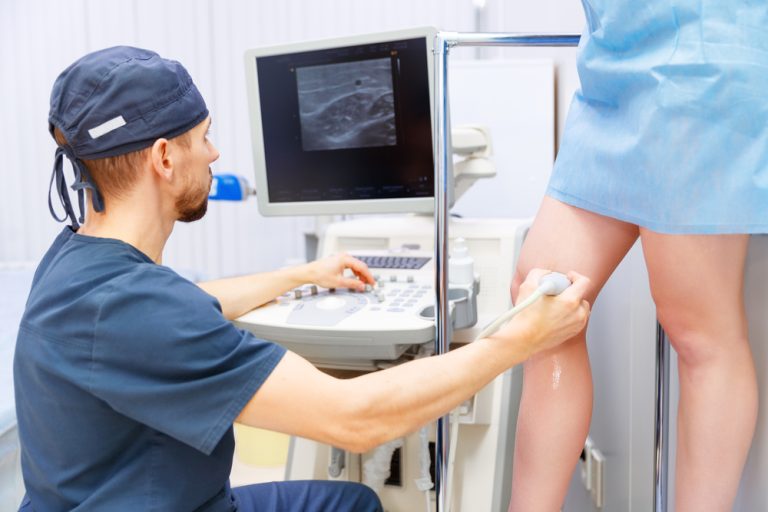Varicose Veins
Varicose veins are bulging, rope-like veins in the legs. Some people who have varicose veins do not have any associated symptoms and seek treatment for cosmetic reasons only. However, many patients state that the veins cause pain or a heavy feeling in their legs. They may also cause swelling, which can lead to inflammation of the skin (cellulitis) or ulcers (non-healing wounds).
Veins are responsible for carrying blood back to the heart. Since the veins in the legs are moving the blood against gravity, there are valves that close to prevent the blood from flowing back down toward the feet. In a person with varicose veins, those valves can be defective. Since the valves are not closing, blood flows backward, known as venous reflux, and pools in the legs. The pooled blood causes varicose veins and can lead to other symptoms or complications.
There are some factors that contribute to the development of varicose veins:
Age: As we get older, the valves have a harder time regulating blood flow.
Sex: Varicose veins are more common in women.
Obesity: The added pressure on the veins of people who are overweight makes them more likely to develop varicose veins.
Family history: People with family members who have varicose veins are more likely to develop them also.
Any vein in the body can become varicose, however the veins of the legs are most common. The bulging veins mentioned above are, therefore, most often referred to as varicose veins. Spider veins are a variant of varicose veins but are different than their bulging counterparts. Spider veins are closer to the surface of the skin, are red or blue, and vary in size but are generally smaller than varicose veins.
Treatment
There are some self-care exercises that can help alleviate the symptoms of varicose veins, but in certain instances, additional treatments are needed.
Speak with our team of professionals to schedule a consultation for treatment options.

